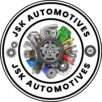Whether you drive a rugged Ford Ranger, a sleek Ford Mustang, or a reliable Ford EcoSport, keeping your vehicle in top shape requires one thing—quality Ford replacement parts. Over time, wear and tear, accidents, or routine maintenance make it necessary to replace certain components. But with so many choices—genuine parts, OEM, and aftermarket—it can be overwhelming to pick the right ones.
This guide will help you understand everything about Ford replacement parts, from choosing the right type to where to buy, pricing tips, and how to avoid fake products. By the end, you’ll know exactly how to save money while keeping your Ford running like new.
Why Are Ford Replacement Parts So Important?
Every vehicle is built with thousands of parts working together. Over time, parts such as brake pads, filters, spark plugs, suspension components, and even electrical systems need replacement. Using low-quality or fake parts can:
- Reduce your car’s performance
- Void your warranty
- Lead to safety risks
- Increase long-term repair costs
Choosing genuine or high-quality Ford replacement parts ensures your car stays reliable, fuel-efficient, and safe on the road.
Types of Ford Replacement Parts
Not all replacement parts are created equal. When shopping for your Ford, you’ll encounter three main categories:
1. Genuine Ford Parts (OEM)
These are manufactured by Ford or its approved partners and are identical to the parts originally installed in your car.
Benefits:
- Perfect fit and compatibility
- Backed by Ford warranty
- Maintains resale value
Downside:
- Typically more expensive than aftermarket options
2. OEM (Original Equipment Manufacturer) Parts
OEM parts are made by the same company that manufactures parts for Ford but sold without the Ford branding.
Why choose OEM?
- Same quality as genuine parts
- Slightly cheaper than branded genuine parts
3. Aftermarket Parts
These are made by third-party manufacturers and are available for nearly every Ford model.
Pros:
- Often more affordable
- Wider variety (performance upgrades, custom options)
- Readily available
Cons:
- Quality varies by brand
- Some may not fit perfectly
Pro Tip: If you go with aftermarket parts, stick to reputable brands and suppliers to ensure safety and performance.
How to Choose the Right Ford Replacement Parts
With so many options, here’s how you can make the right decision:
Check Your Vehicle’s Needs
Look at your car’s age, mileage, and usage. A newer Ford might benefit more from genuine parts to maintain warranty and value, while an older model could use cost-effective aftermarket parts.
Look for Part Numbers
Always confirm the part number before purchasing. This ensures compatibility and prevents unnecessary returns.
Buy from Trusted Sellers
Choose authorized Ford dealers or verified online stores. Some reliable options include:
- Ford Authorized Service Centers
- Reputable auto part retailers (like AutoZone, CarParts.com, or your local distributor)
- Exporters like JSK Automotives (if targeting bulk buyers worldwide)
Avoid Counterfeit Parts
Fake parts might look real but can be dangerous. Always check packaging, serial numbers, and supplier reviews.
Where to Buy Ford Replacement Parts
Finding quality parts is easy if you know where to look:
- Ford Dealerships – Best for genuine parts, but often at higher prices.
- Online Marketplaces – Amazon, eBay, or specialized auto part websites often provide good deals.
- B2B Exporters – For bulk buyers, companies like JSK Automotives supply Ford, Hyundai, Renault, Mahindra, and other brands worldwide.
- Local Auto Part Shops – Ideal for urgent needs, but verify authenticity.
Cost-Saving Tips for Ford Owners
- Compare prices across online and offline sellers
- Look for seasonal discounts and wholesale options
- Consider remanufactured parts for items like engines and transmissions
- Use aftermarket parts for non-critical components (like mirrors, wipers)
- Do regular maintenance to reduce frequent replacements
Common Ford Replacement Parts You’ll Need
Some parts require replacement more often than others. Here’s a quick list:
- Brake Pads and Rotors – Every 30,000–50,000 km
- Air and Oil Filters – During every service
- Spark Plugs – Every 30,000–60,000 km
- Suspension Components – As needed, especially in rough terrains
- Timing Belt/Chain – As per your car manual
- Headlights & Electrical Parts – When worn or damaged
